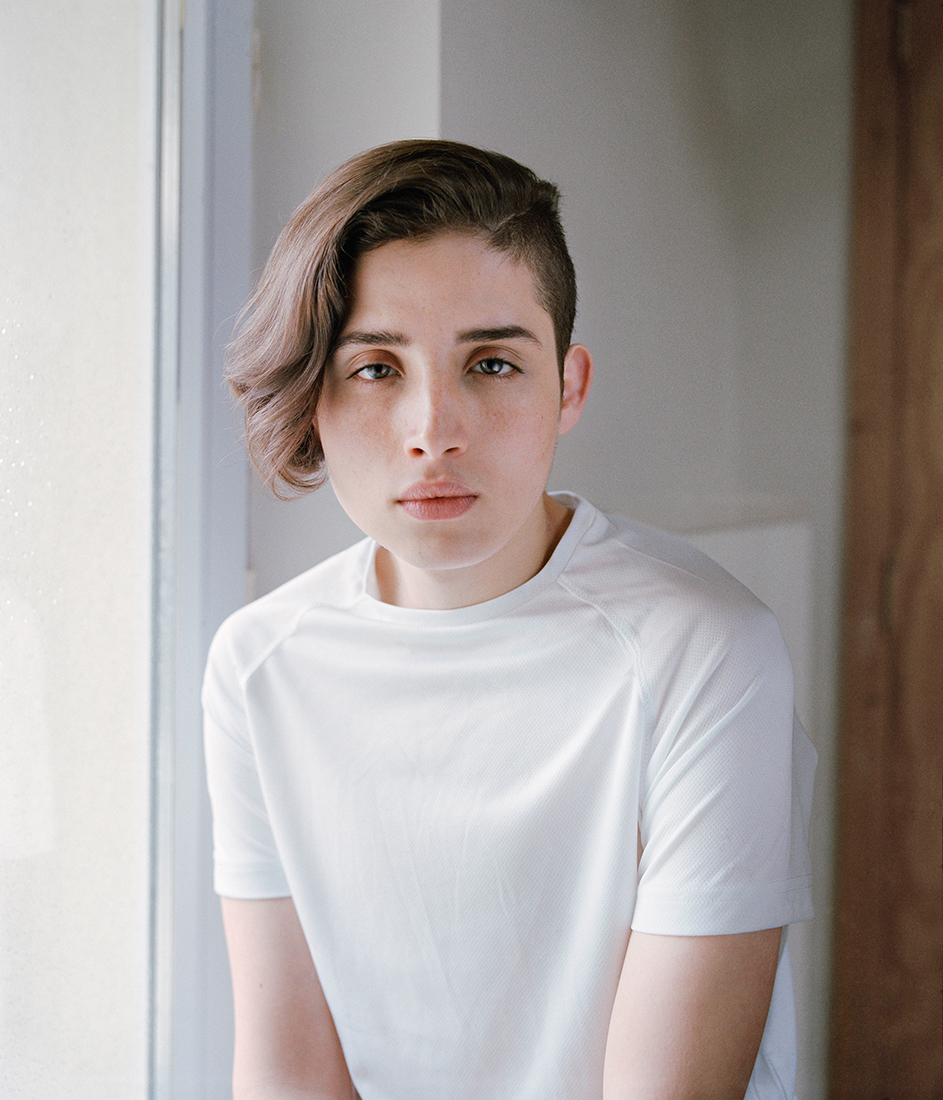Portrait - NOMINEE: Anne-Sophie Guillet
Photo © Anne-Sophie Guillet
Anne-Sophie Guillet
Inner Self
Support this photographer - share this work on Facebook.
Anne-Sophie Guillet pays special attention to the randomicity of daily commutes, to androgynous looking people of an indistinct gender. Far from fixed appearances, everything in her work is fluid, impermanent, and transitory. For many years now, the artist has shot around thirty-four portraits in medium format using natural light. Her subjects pose indoors against a neutral background. ‘Inner Self’ developed mostly through chance mettings with young unknowns who visibly escape the strict man/ woman binarity. Whether the effect is purely aesthetic or there are actual hormones at play, all of them heavily blur the lines of gender in some way. Taken head-on, their portraits seem draped in heavy silence; there is however nothing mute about them, instead something which seems to queston how our very identities are constructed and perceived when faced with the Other’s gaze. - text by Marie Chênel
My series emerge from reconsideration on perceptions and interpretations of representation. The fixed or moving image ask for the spectator to face the idea that one can make a misconception in appearances. With the 'Inner Self' series, my interest is to raise questions, participate into bring to light, and to fight for the rights and respects of individuals with non conforming identities from the established social binary norm.
About author:
Anne-Sophie Guillet is a French photographer born in Oxford, UK. She graduated in 2013 with an MFA in Visual arts & Photography from the Royal Academy of Fine Arts in Brussels, Belgium. She currently lives and works in Brussels. Anne-Sophie Guillet received the Roger de Conynck/ fondation roi Baudouin prize in 2013, a price given to a talented emerging photographer and got selected laureate of the ‘proposition d’artistes 2013’ at Contretype in Brussels. Her work was show at the triennale in Hasselt in 2016 « Stadstriënnale » and recently got selected for the Biennale of Young Creation « Watch this Space #10 » which will take place in late 2019. She has exhibited in various places nationally and internationally including group shows and festivals. Her work has been selected for the renowned contemporary art show ‘Salon de Montrouge’ in Paris, in 2018. Her first international solo show was at the gallery Poetic Space in Tokyo in March 2019 together with the launching of her first book with Case publishing. Meanwhile at Cenquatre in Paris some portraits of the Inner Self series will be shown during the « Festival Circulation(s) » in the screening of the « Special european festival screening » as she has been selected by BIP Liège for their ‘coup de coeur’ photographer. Anne-Sophie Guillet pays special attention to the randomicity of daily commutes, to androgynous people of an indistinct gender. Hers is a contemplative look, one open to experiencing reality as a ow, somewhere in the humidity of Japan’s late summer months. Far from fixed appearances, everything in her work is fluid, impermanent, and transitory. For many years now, the artist has shot around twenty portraits in medium format using natural light. Her subjects pose indoors against a neutral background. Inner Self developed through chance meetings with young unknowns who visibly escape the strict man/woman binary. Whether the effect is purely aesthetic or there are actual hormones at play, all of them heavily blur the lines of gender in some way. Taken head-on, their portraits seem draped in heavy silence; there is however nothing mute about them, instead something which seems to question how our very identities are constructed and perceived when faced with the Others’ gaze. In 2016, during the first of two summer residencies in rural Japan, Anne-Sophie Guillet began a series entitled ‘Komorebi’ - a name referring to the light filtering through the the leaves of a tree - which blurs short videos with photographs in a multitude of ensuing shots. According to her repetitive walks in a limited perimeter between rice fields and, the mountains and the sea, and with intuition as her only guide, the artist plunges us into the depths of a “narrative continuum”, or perhaps into the palpable space of life itself: a space where, contrary to the vast conceptualized spaces of Cartesianism, human beings and things still grow side by side organically. Set to the particular rhythm of the Japanese crickets, ‘gold sh’, ‘screens’ and ‘bamboo forest’ videos seem In the tune with the “mono no aware” concept _ a “sensitivity to ephemera”, or the “pathos of things” according to its literal translation _ which has marked the aesthetics of the Japanese archipelago for centuries.

